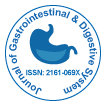మా గ్రూప్ ప్రతి సంవత్సరం USA, యూరప్ & ఆసియా అంతటా 3000+ గ్లోబల్ కాన్ఫరెన్స్ ఈవెంట్లను నిర్వహిస్తుంది మరియు 1000 కంటే ఎక్కువ సైంటిఫిక్ సొసైటీల మద్దతుతో 700+ ఓపెన్ యాక్సెస్ జర్నల్లను ప్రచురిస్తుంది , ఇందులో 50000 మంది ప్రముఖ వ్యక్తులు, ప్రఖ్యాత శాస్త్రవేత్తలు ఎడిటోరియల్ బోర్డ్ సభ్యులుగా ఉన్నారు.
ఎక్కువ మంది పాఠకులు మరియు అనులేఖనాలను పొందే ఓపెన్ యాక్సెస్ జర్నల్స్
700 జర్నల్స్ మరియు 15,000,000 రీడర్లు ప్రతి జర్నల్ 25,000+ రీడర్లను పొందుతున్నారు
ఇండెక్స్ చేయబడింది
- ఇండెక్స్ కోపర్నికస్
- గూగుల్ స్కాలర్
- షెర్పా రోమియో
- J గేట్ తెరవండి
- జెనామిక్స్ జర్నల్సీక్
- చైనా నేషనల్ నాలెడ్జ్ ఇన్ఫ్రాస్ట్రక్చర్ (CNKI)
- ఎలక్ట్రానిక్ జర్నల్స్ లైబ్రరీ
- RefSeek
- హమ్దార్డ్ విశ్వవిద్యాలయం
- EBSCO AZ
- OCLC- వరల్డ్ క్యాట్
- SWB ఆన్లైన్ కేటలాగ్
- వర్చువల్ లైబ్రరీ ఆఫ్ బయాలజీ (విఫాబియో)
- పబ్లోన్స్
- జెనీవా ఫౌండేషన్ ఫర్ మెడికల్ ఎడ్యుకేషన్ అండ్ రీసెర్చ్
- యూరో పబ్
- ICMJE
ఉపయోగకరమైన లింకులు
యాక్సెస్ జర్నల్స్ తెరవండి
ఈ పేజీని భాగస్వామ్యం చేయండి
నైరూప్య
The Prevalence of Gluten-Free Diet at the University of Otago: A Cross- Sectional Survey
Douglas Hancock, Sultan Al-Shaqsi, Mastura Badron, Nadiah Mohd Rafain, Kurinji Nalankilli, Shivam Deo, Jayani Kannangara, Ray Li, John Dockerty, Josie Athens and Kirstin Kenrick
Aim: The objectives of this study were to: (1) determine the prevalence of the GFD in a New Zealand adult population, (2) investigate the reasons why people are on the GFD and (3) explore what factors limit adherence to the diet.
Methods: This was a cross-sectional online survey of 3,000 students and 3,000 staff at the University of Otago, New Zealand, undertaken in July-August 2013. Participants were randomly selected from databases of students and staff at the University of Otago in July 2013. Survey questions included four main sections: demographics, dietary habits, motivating factors and barriers to following a GFD. The analysis compared the variables between students and staff as well as between people on the GFD and those not on the GFD, using a linear regression analysis model.
Results: The overall response rate was 35.5% (2123 respondents). The prevalence of people currently on the GFD was 6.1% in this university population, while another 6.2% reported having previously tried the GFD. The prevalence of CD was 1.2%. Feeling unwell when eating food that contains gluten was the main reason for following the GFD in our study population. Poor availability along with cost of gluten-free (GF) foods was the main factors limiting adherence to the GFD.
Conclusion: A significant proportion of a New Zealand university population is currently following or has followed a GFD. People follow a GFD for multiple reasons other than medical indications. People with special diets in a university setting appear to have difficulty accessing dietary options.
సబ్జెక్ట్ వారీగా జర్నల్స్
- ఆహారం & పోషకాహారం
- ఇంజనీరింగ్
- ఇన్ఫర్మేటిక్స్
- ఇమ్యునాలజీ & మైక్రోబయాలజీ
- ఎకనామిక్స్ & అకౌంటింగ్
- కంప్యూటర్ సైన్స్
- కెమికల్ ఇంజనీరింగ్
- క్లినికల్ సైన్సెస్
- గణితం
- జనరల్ సైన్స్
- జియాలజీ & ఎర్త్ సైన్స్
- జెనెటిక్స్ & మాలిక్యులర్ బయాలజీ
- నర్సింగ్ & హెల్త్ కేర్
- పర్యావరణ శాస్త్రాలు
- ఫార్మాస్యూటికల్ సైన్సెస్
- బయోకెమిస్ట్రీ
- బయోమెడికల్ సైన్సెస్
- భౌతిక శాస్త్రం
- మెటీరియల్స్ సైన్స్
- మెడికల్ సైన్సెస్
- రసాయన శాస్త్రం
- వెటర్నరీ సైన్సెస్
- వ్యాపార నిర్వహణ
- సామాజిక & రాజకీయ శాస్త్రాలు
క్లినికల్ & మెడికల్ జర్నల్స్
- అంటు వ్యాధులు
- అణు జీవశాస్త్రం
- అనస్థీషియాలజీ
- ఆరోగ్య సంరక్షణ
- ఆర్థోపెడిక్స్
- కార్డియాలజీ
- క్లినికల్ రీసెర్చ్
- గ్యాస్ట్రోఎంటరాలజీ
- జన్యుశాస్త్రం
- టాక్సికాలజీ
- డెంటిస్ట్రీ
- డెర్మటాలజీ
- నర్సింగ్
- నెఫ్రాలజీ
- నేత్ర వైద్యం
- నేత్ర వైద్యం
- న్యూరాలజీ
- పల్మోనాలజీ
- పీడియాట్రిక్స్
- పునరుత్పత్తి ఔషధం
- ఫిజికల్ థెరపీ & పునరావాసం
- మందు
- మధుమేహం & ఎండోక్రినాలజీ
- మనోరోగచికిత్స
- మైక్రోబయాలజీ
- రేడియాలజీ
- రోగనిరోధక శాస్త్రం
- సర్జరీ
- హెమటాలజీ

 English
English  Spanish
Spanish  Chinese
Chinese  Russian
Russian  German
German  French
French  Japanese
Japanese  Portuguese
Portuguese  Hindi
Hindi